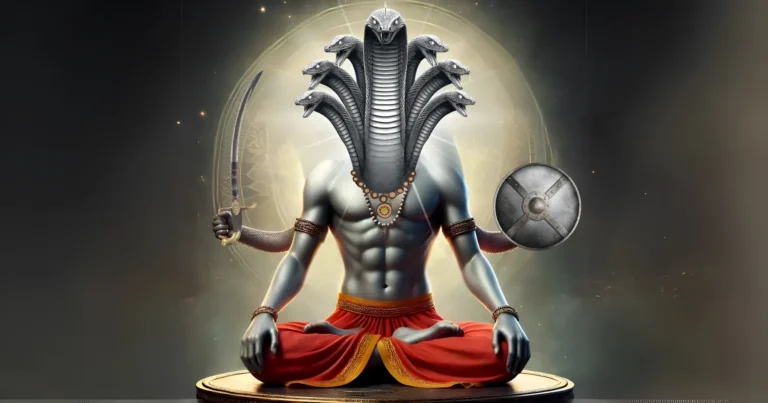Please Like the Blog and Share it for Maximum Reach
Table of Contents
Significance of the Kali Yantra
The Kali Yantra is dedicated to Kali Devi, the 1st Dashamahavidya and manifestation of transformation. The word transformation is often used in reference to Kali Devi. What does this actually mean, and how does the Kali Yantra help achieve this?
Kali is the female personification of Kala, or Time. Representations of Kala have always been fierce to nature, which includes Yama, Bhairava, and Dhumavati. Kala can never be tender or relenting. It teaches us to change and adapt- people change, so do places and events. In this ever-changing material world, nothing is permanent. Thus Kali Devi is “transformation” both within and without.
She is always seen laughing menacingly. Her blissful laughter reminds us of life’s perishable nature, to remain unentagled by its illusory glamour, and see the truth that lies hidden.

Nature of Kali Sadhana
The path of Kali Sadhana is not an easy one. Her iconography suggests she attracts individuals who feel a sudden, irresistible pull towards her. They are not here to live superficial lives. Instead, they want to dig deep into the workings of the human psyche and unravel dark, unexplored truths that others may not dare to face.
Contrary to the English saying “See beauty in everything,” one shall see the ugliness that lies behind the mask of beauty. This refers to seeing through false intentions as clear as a mirror, seeing the unpleasantness that lies beneath the skin of lust—the flesh, the bones, and the skeleton—and to withstand the reality of life without a trace of morose.
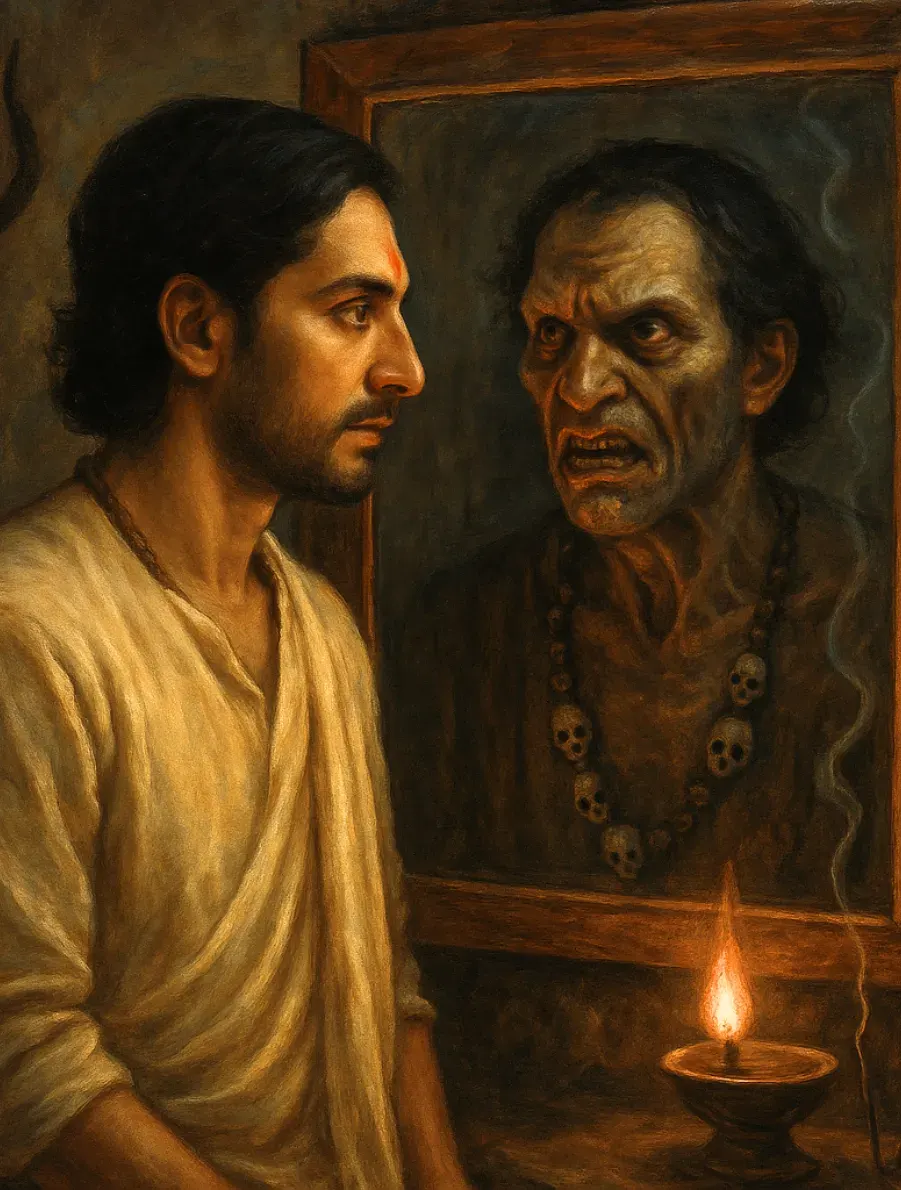
Significance and Nature of Kali Ma
Kali Devi stands unclothed or bereft of garments, suggesting that all the darkness within shall ultimately stand exposed and naked to the world and to oneself. She teaches us to confront our negativity (past life vasanas such as jealousy, anger, greed, lust etc.) with fearlessness and acceptance. Unlike Parvati, Lakshmi, and Saraswati Devi who have a nurturing (Saumya) approach towards their devotees, Kali devi is profoundly mature and strict. She presents one with challenges so that one grows into a resilient being, capable of deciphering life’s truth by the grit of his own wisdom. Her intense energy is not suitable for weak-minded individuals who feel overwhelmed by life and its problems.

For Kali Sadhana, one must be willing to sacrifice the ego, which she holds in her hand. The head in her hand doesn’t belong to any far fetched demon. It represents our egoic selves. Her sadhana mandates a high degree of veera bhava, or inner courage. One either has it or doesn’t. It can’t be cultivated.
What does the Kali Yantra represent?
The entire energetic blueprint of Kali Devi is encapsulated in her Yantra; it is her temple. The Yantra is like the Morse code, containing all her secret knowledge, powers and universal truths in the form of geometric shapes and symbols. The lotus petals, circles, especially the downward triangles and their placement, all have a deep impact on our psyche, the bindu being the center of pure consciousness where all Her energies lie.

Meditating on the Yantra with devotion initiates sudden realizations, energy shifts and periods of trance when done under the guidance of a siddha guru. The Kali Yantra is thus a very powerful conduit of divine grace, helping one transcend the shackles of material existence and our time-bound identities.
Worshipping the Kali yantra is akin to worshipping the goddess in person.
Traditionally, women are depicted as feminine, with their hair tied in a bun, in modest drapery, and as an epitome of shyness. But here the mother goddess is in a wild and dominating avatar; her hair is unkept and loose, her expressions fierce while she is unclothed, defying the conventional norms of society. She steps over her consort and stands with firmness. Hence, she is widely worshipped through Vamachara (left-handed path of Tantra), which involves embracing unconventional elements disapproved by society.

We observe a waistbelt of severed hands around her waist. This waistbelt of hands signifies Karmendriyas, or organs of action. The Srimad Bhagavatam classifies hands as a major karmendriya in the list of Achita Tattvas. The waistbelt of severed hands suggests her intolerance towards sinful actions. She expects her sadhakas to walk on the sharp-edged sword of moral and righteous conduct; else they shall be punished for their misdoings.
What are the Benefits of the Kali Yantra?
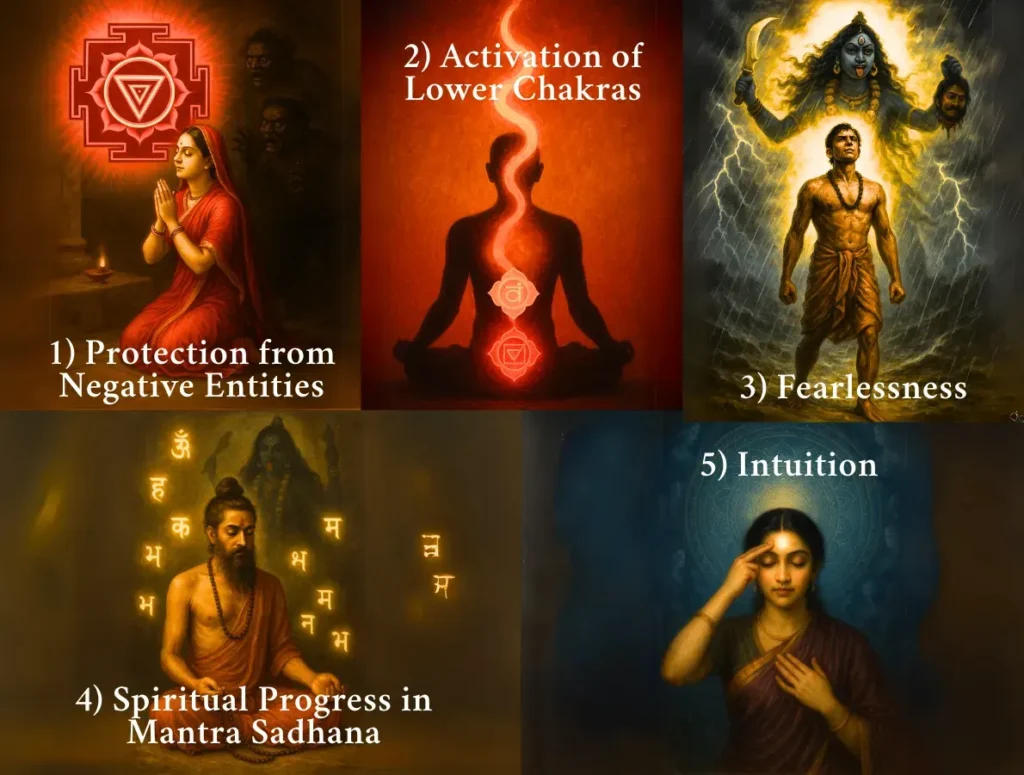
The benefits of the Kali Yantra are as follows:
- Protection from all kinds of dark forces, negativity, evil eyes, black magic, deep unnamable fears and enemies. Its benefits go beyond surface rituals Those exhausted by negative energies, betrayed, or eternally worried feel better and stable in its presence.
- For sadhakas, it accelerates mantra sadhana, especially when done with the Kali bija mantras (kindly do not attempt without guru’s guidance).
- The Yantra helps activate the lower chakras, particularly the Swadhisthana and Muladhara which govern survival and creativity. All problems pertaining to the lower chakras are solved by the Yantra.
- One develops courage and fearlessness to face life’s challenges head on without retreating.
- Individuals worshipping the Kali Yantra can sense energies due to intuitive abilities developed during the course of Yantra meditation.
The Symbolism Behind the Geometry of the Kali Yantra
Each line, shape, and pattern in the Kali Yantra is an outcome of deep realizations and visions experienced by adept tanriks. Their metaphysical symbolism helps attain transcendence and cultivate the power to face life challenges.
The Downward-Pointing Triangle: Feminine Creative Force
The downward-inverted triangles are the distinguishing factors that form the heart of the Yantra. Downward triangles represent Shakti, while upward triangles represent Shiva. Unlike intersecting triangles found in other yantras, in the Kali Yantra three downward-facing triangles form a tight central cluster. They represent three aspects of Shakti: creation, preservation, and destruction.
As the concentric triangles reduce in size, grace descends from the gross (outer triangles) to the subtle (inner triangle). Inside the subtlest triangle that is in the core resides Devi Kali, the Supreme Truth, hidden by the grossness of this material world. Thus the downward triangles show how grace penetrates from the gross to subtle sheaths of the seeker’s being.
Circles Surrounding the Triangle
Concentric circles encircle the triangle. These symbolize the cyclical nature of time, karma and rebirth — which Kali Devi governs and ultimately dissolves. For the sadhaka, these circles represent the layers of the self that must be pierced through devotion and meditation.
The Lotus with Eight Petals (Ashtadal Padma)
Surrounding the triangle is an eight-petaled lotus, which symbolizes purity amid chaos as well as eight directions of energy. Each petal is a spiritual gateway, often representing ashta siddhis (spiritual powers) or ashta shaktis (forms of Devi). It serves as a spiritual filter — allowing only purified, awakened energy to move inward or outward.
The Square (Bhupura) With T-Shaped Entrances
The outermost layer is the square enclosure with four T-shaped gates, facing the four cardinal directions. The Bhupura represents the material world (bhuloka), which must be consciously entered through awareness and ritual. The gates symbolize crossing over from the mundane into the spiritual, which shall eventually initiate a shift in perception and consciousness.
The Central Bindu
At the very center of the yantra is the bindu, often hidden within the innermost triangle. This bindu is Kali Herself, the still point in the center of the storm — the Absolute, beyond duality, time, or form. It’s where the practitioner focuses one’s gaze during meditation, merging the mind with pure awareness.
When to Install the Kali Yantra?

Before installing the Yantra, one should look for days that align with Kali Devi’s energy, such as Amavasya (New Moon), Ashtami Tithi, Navratri days, or Kali-specific planetary hours (especially during Rahu Kaal or midnight rituals, if you are initiated). If you are unsure, you may choose a quiet Saturday or Tuesday morning for the Yantra installation.
External purity is very important in activating the Yantra’s energy. One should bathe and wear fresh, clean clothes, preferably of red or white color. If the Yantra is made traditionally on Bhojpatra, one should sprinkle Ganga Jal or gomutra around the area, not on the Yantra.
How Should One Use the Kali Yantra at Home?
The Kali Yantra is not to be passively hung on the wall but revered from the bottom of one’s heart as the breathing symbol of divine grace. This Yantra is capable of granting transcendence, being the living personification of Kali Devi.

To install the Yantra, select a peaceful and undisturbed area. The location must be clean, preferably set aside for prayer or dhyana. Kindly do not install it in the bedroom unless instructed by a spiritual guide.
Where Should I Place the Kali Yantra for Best Results?
The yantra must face the west direction, while you should sit facing the east during meditation. West is the direction of the setting sun, suiting Kali Devi’s nature of dissolution. For the sadhaka, east (the direction of the rising sun) is ideal for receiving spiritual blessings and wisdom. Thus, the placement suggested aligns with Vastu rules and the nature of the goddess.

On a wooden plank, keep the yantra on a red or black cotton cloth. These colours sync with Shakti’s raw energy, where Red represents Rajas (or the mode of passion) and Black denotes Tamas (the mode of ignorance). For yantras like the Kali Yantra, where rituals matter, it is best to avoid plastic-based yantras. Bhojpatras Yantras are highly suitable.

Ensure that your altar is free of dust, since Devi resides only where there is cleanliness and respect for her.
Guru Deeksha is a mandatory qualification
Note: To attempt this sadhana, initiation is a must qualification. Otherwise it may result in severe physical and mental complications that will be difficult to handle. Invoking Kali’s energy without guru deeksha can be detrimental for both material and spiritual life. This article is purely informative and does not encourage Kali Sadhana (or any Dasha Mahavidya Sadhana) unless one is initiated by a capable spiritual master.
Meditation and Mantra Chanting with the Kali Yantra
Daily sit before the yantra at dawn or dusk and light a ghee lamp or diya in front of it. Offer a red flower or even simple water with devotion. Only initiated sadhakas are advised to shut their eyes and chant the Kali Mantra “Om Krim Kalikayai Namah” or the mantra given to you during the time of initiation. Again note: Guru Deeksha is mandatory of any form of Kali sadhana. Even 11 or 21 repetitions with full focus can initiaite energy alignment. Over time, one can increase the chanting to 108 times (or as guided by your guru) depending on one’s life events and body response.

Focus your attention on the bindu (dot) at the center of the yantra. This is where the power of the Yantra is concentrated. Allow your mind to settle there.
The geometric shapes heavily affect one’s mental patterns, inducing tranquility and insight and even bringing up negative thought patterns that need to be dissolved with sadhana.
Keep in mind, the strength of the Kali Yantra isn’t in elaborate rituals. It is in consistency, devotion, and faith. The more you commit to it, the more it reflects back to you.
Ideally, the Kali Yantra should face the west, with the practitioner facing east while meditating. It can be kept in a sacred space, on a clean cloth or wooden pedestal. Avoid placing it near the bedroom unless under proper guidance. The western direction resonates with Kali’s dissolving energy and enhances spiritual work.
Apply a bindu (dot) on the yantra with kumkum, sindoor, or chandan using the ring finger of your right hand. Offer red flowers to the Yantra, particularly hibiscus, which is dear to Kali. Depending on the availability, you may also offer raw rice, cloves, or fruits.
Which Mantra Should Be Chanted With the Kali Yantra?
The most famous and powerful Kali mantra is:
ॐ क्रीं कालिकायै नमः
Om Krim Kalikayai Namah
It is short and extremely effective in invoking the presence of Kali Devi.

Chanting this 108 times daily while gazing at the yantra builds the momentum for grace to flow. Advanced sadhakas may use longer mantras like the Kali Mahavidya Mantra or guided beej sound practices depending on their lineage.
Inwardly speak your intention—not as a desire, but as a prayer. This will bring transparency, allowing Goddess Kali to mould your path in favour of your material and spiritual. As described earlier in the significance part, the first sacrifice that must be made is the ego. Hence, offer your ego, your attachments, and your doubts at the feet of Kali Devi, and let her manage the reins of your life.
Kali Devi’s Link to Lord Shiva in the Yantra
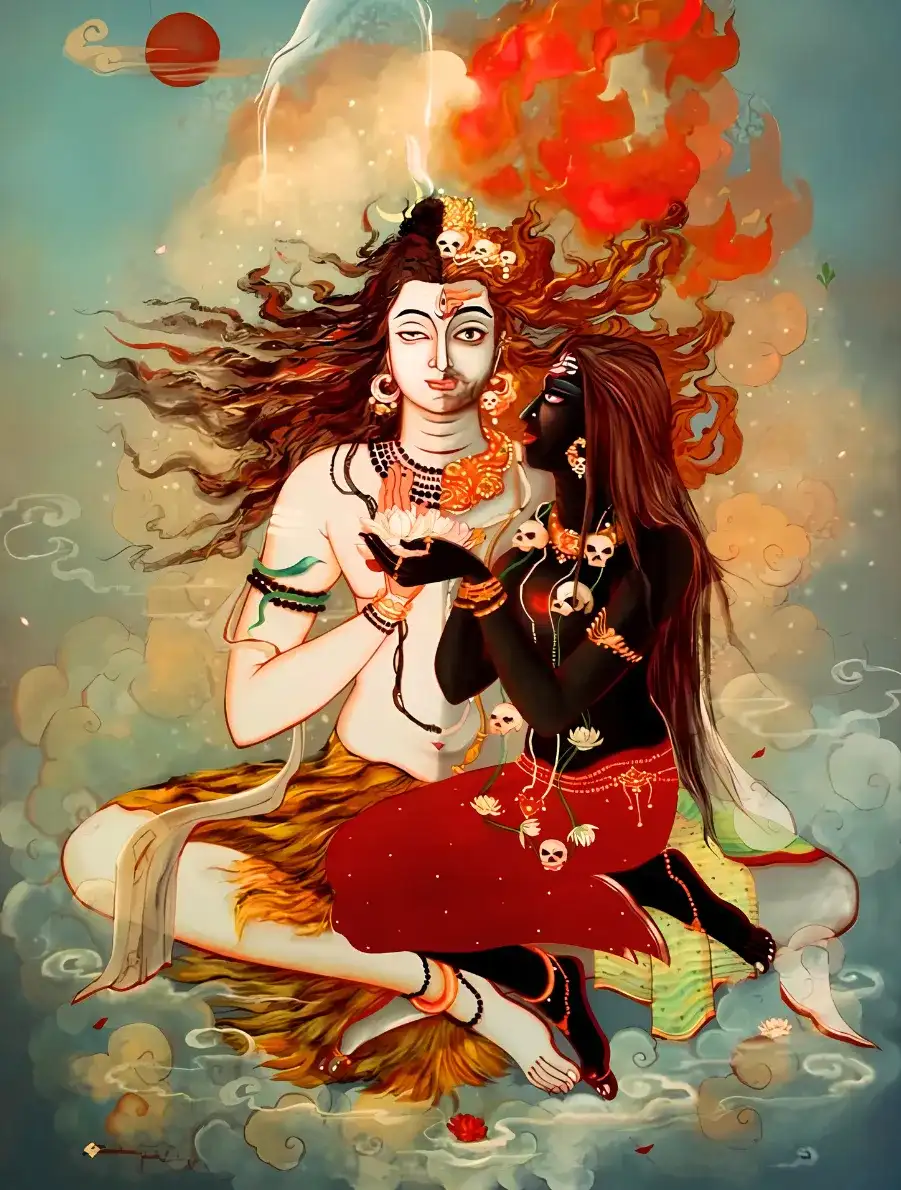
At first glance, Kali Devi appears as a fierce and independent force — wild, untamed, and dancing on the chest of Lord Shiva. But beneath this dynamic symbolism lies the eternal interplay between Consciousness (Shiva) and Energy (Shakti). The Kali Yantra, though dedicated to the Goddess, vibrates with this silent presence of Lord Shiva — particularly through its center: the bindu, representing Shiva’s third eye, or Trinetra.
In tantric philosophy, Kali is not separate from Shiva. She is his awakened energy — the pulsating Shakti without which even the most potent consciousness remains static. While Kali moves, rages, destroys, and births, Shiva remains motionless, expansive, and aware. The Kali Yantra holds both these aspects: movement through its sharp triangles and lotus petals and stillness in its central dot — the bindu.
This bindu when meditated upon, becomes the Trinetra — Shiva’s third eye — the point of higher perception, where duality is burnt away. It is the inner vision to see beyond form, fear, and illusion. In many tantric commentaries, this bindu is described as the meeting point of action and inaction— exactly the realm where Kali operates, and Shiva watches. Shiva is essential to ground Kali; Kali is needed for Shiva to manifest.
Importance of Bhojpatra in Yantra-Making

According to Skanda Purana and Shaktisamgama Tantra, Bhojpatra is one of the ideal writing mediums for mantras, yantras, and kavachas. The Bhojpatra breathes — retaining prana. Sages believed that the pranic field of the Bhojpatra tree could hold subtle vibrations for extended periods — unlike paper, or synthetic substitutes.
Its natural origin and association with Himalayan sattva (purity) make it ideal for absorbing high-frequency energies like that of Maa Kali.
Unlike industrial paper, which is processed and energetically flat, Bhojpatra has a living memory. Its fibrous layers absorb the mantra-infused ink like skin absorbs sacred ash.
The Bhojpatra acts as a safe and grounding vessel to anchor the fierce and fast-acting Shakti of Kali Devi.
A Kali Yantra handmade on Bhojpatra using natural inks (made from ingredients like haldi, kumkum, or chandan) becomes ritually alive, which otherwise cannot be replicated by print or synthetic duplication.
Once energized on an auspicious tithi (like Amavasya), the Bhojpatra yantra becomes a spiritual vessel storing divine frequencies like a talisman. Many tantrics even use it as a base for siddhi kriyas.
What Makes Our Kali Yantra Different from Printed or Mass-Produced Ones?

- Our yantra is drawn by hand and not printed by machines. The sadhaka who prepares the Yantra does sadhana before starting the Yantra creation. This process creates a yantra that is spiritually “alive.” Printed yantras, on the other hand, may visually resemble the original form but, being inert, may not carry subtle energy.
- Our yantras are created on natural Bhojpatra bark, as prescribed in ancient texts. Bhojpatra holds vibration, unlike glossy paper or metallic foils used in commercial yantras.
- To prepare our Yantras, use natural pastes of kumkum, chandan, kesar, and haldi. This natural ink preserves the sattvic quality of the yantra, enhancing its spiritual potency. Chemical prints, in contrast, may be visually vibrant but lack pranic purity. A yantra meant for worship must never be made with lifeless materials.
- Our Kali Yantras are not dispatched immediately after creation. They are ritually energized (prana-pratishtha) by our Guru Parampara system, inviting the Devi to dwell in the Yantra.
- We do not modify the original form of the Yantra to make it “market-friendly” or decorative. The yantra’s geometry remains true to Tantric scriptures and oral lineage teachings.
Is Kali Yantra Suitable for Householders or Only Tantrics?
This is a common question — and an important one. Because of its fierce reputation and energy, many believe the Kali Yantra is only for advanced tantrics or renunciates. But in truth, Goddess Kali does not belong to any exclusive group. She belongs to those who are sincere, open, and ready to transform — whether they live in forests, temples, or homes.
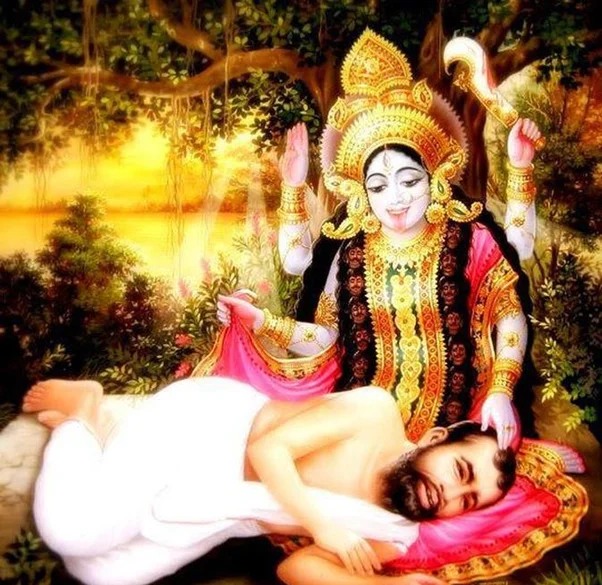
The Kali Yantra is absolutely suitable for householders, provided one is initiated by a guru and is ready to devote at least 5 minutes daily as spiritual discipline.
It shields the home from negative vibrations and attacks. Many initiated householders keep the yantra to protect their family from unknown fears and subtle interferences. The Kali Yantra helps to burn inner impurities and unresolved ancestral karma that manifests as life problems. However, it is always advised to maintain both external and internal purity. Do not place it casually in bedrooms or let others touch it out of curiosity.
In the eyes of Kali Devi, a householder with a pure heart is as exalted as a sannyasi. She does not discriminate by roles — she transforms anyone willing to face truth.
In fact, many of her dear devotees are householders. For example, Ramprasad Sen and Sri Ramakrishna Paramahamsa engaged in deep Kali sadhana while being Grihasthas (householders).
Kali Yantra of Transformation: From Fear to Fierce Freedom
Unlike yantras that address life on the surface, this one shakes our very foundation, challenging notions about ourselves and the world. To sit before the Kali Yantra is to be stripped of pretense, ego, and inherited fear. It is a mirror that reveals our true face, without sugar-coating.
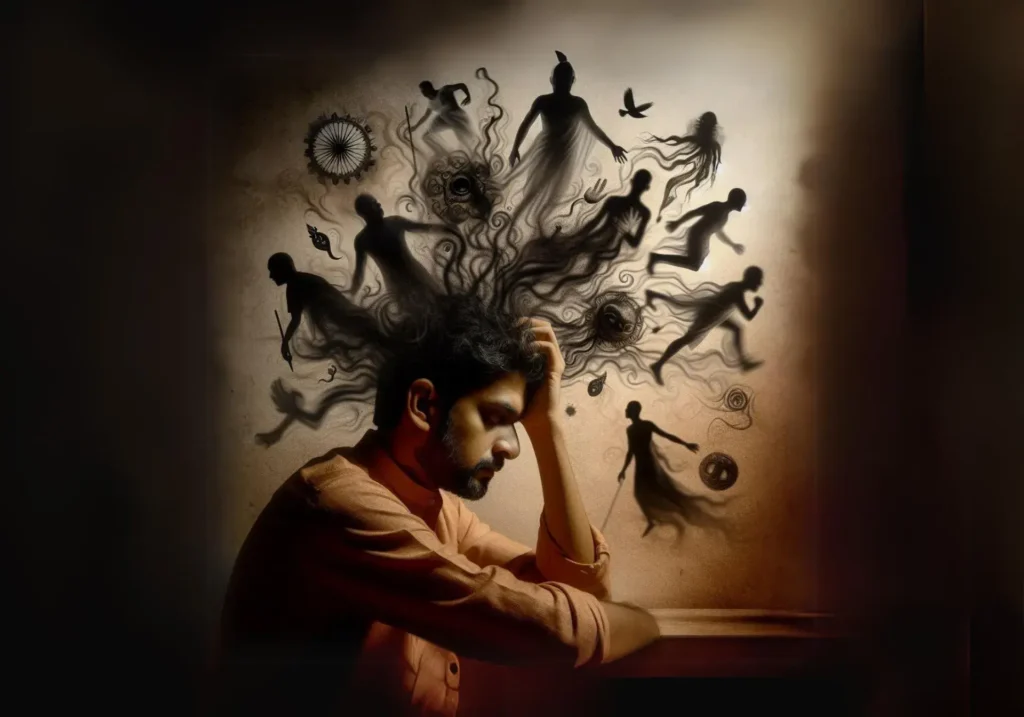
Most of us live with hidden fears — of loss, judgment, failure, death, or simply of being truly seen. We cope with these fears by building layers of personality, roles, beliefs, and even spiritual identities. The Kali Yantra goes deep within those unseen layers by dissolving our falsehood. Its energy doesn’t coddle the mind; rather, it targets the root.
What Does the Transformation Look Like?
At first, the yantra may stir discomfort. Long-buried emotions may rise, intesifying old patterns. This is the process of tantric unraveling, where Kali is not trying to break you — she is breaking what is not you. She reveals what must go before truth can remain.

Over time, as your attachment and devotion towards the Yantra deepen, you shall see how your fears transform into a profound sense of clarity that is hard to explain. All confusions shall change their shape into convictions and resolve. Slowly, the mind’s clinginess shall turn into fierce independence. This journey is not about progress but about undoing what you have built—mental notions and conditioning. This is what ancient sages called Kali’s grace — fierce but compassionate beyond comprehension.
The freedom Kali Devi offers through her yantra is not freedom to indulge, it’s freedom from illusion—the kind of liberation that no outer success can ever match.
Does the Kali Yantra Really Work, or Is It Belief-Based?
This is perhaps the most honest question a sincere seeker can ask — “Does the Kali Yantra actually work?
The Kali Yantra is not powered by belief — it is powered by geometry, mantra, and intention. It is a tantric technology, corresponding to the frequency of Goddess Kali herself. Just as sound waves affect matter (as seen in cymatics), Yantras interact with subtle layers of our mind and energy body.
The triangles, lotus petals, bindu- all have energetic significance. Even without knowing their significance, just meditating on the Yantra influences the subconscious mind, dissolving fear and inertia. That’s not belief — that’s subtle physics, deeply understood by ancient rishis.
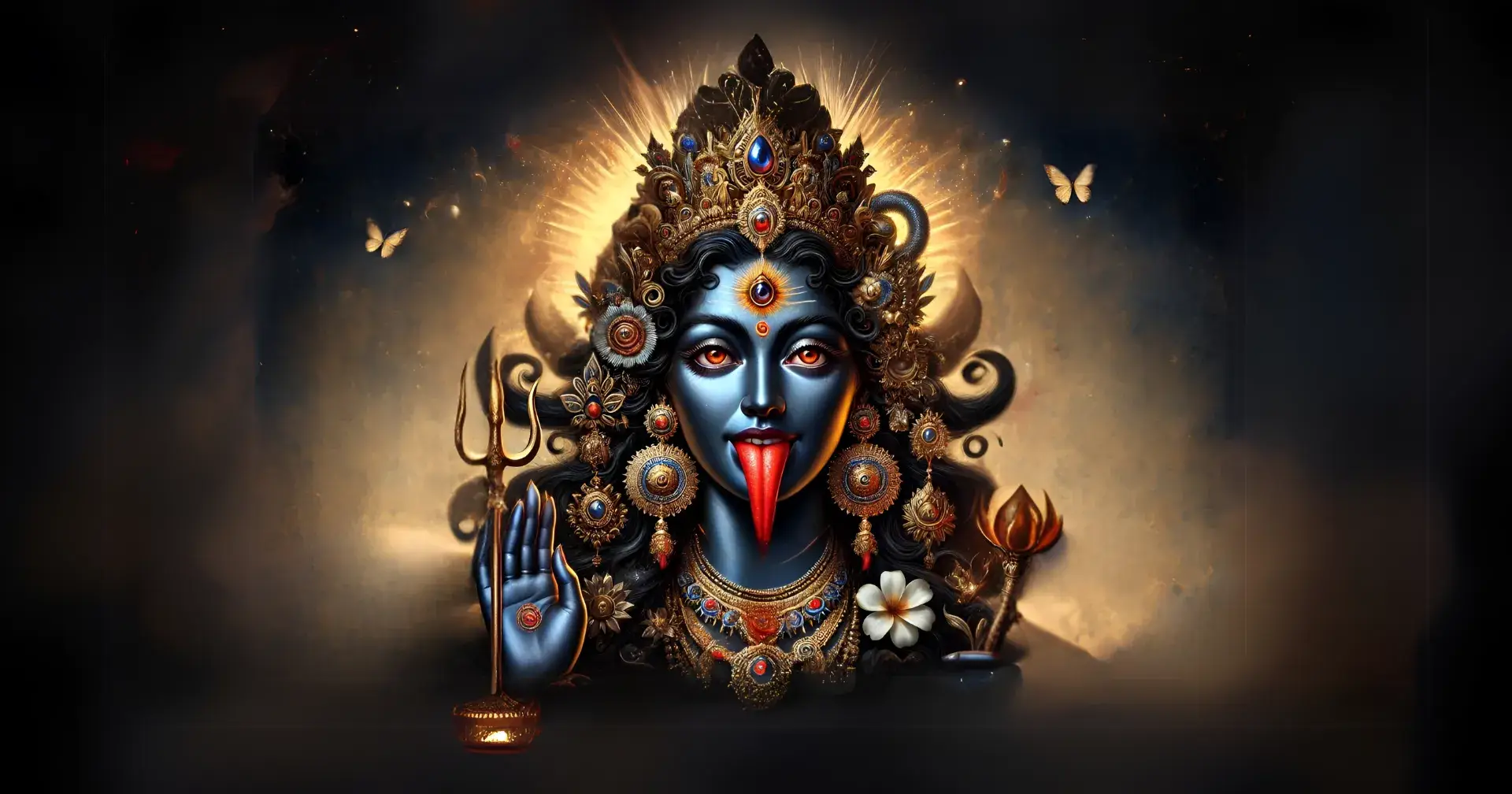
The Kali Yantra responds to devotion and sincerity of intention. It is not about blind belief, but it about being transparent with one’s intention. The Sadhaka must be mentally prepared to face fear, surrender ego and one’s lower identity to the deity.
This alignment brings the change. When you are receptive and tuned to the will of the deity, the yantra becomes a magnifying mirror, amplifying what you bring to it.
Across centuries, householders, saints, tantrics, and even skeptics have reported powerful shifts through yantra sadhana. Stories abound of protection from negative forces, sudden inner direction, or accelerated spiritual growth after regular practice with the Kali Yantra. These are not just placebo experiences —they’re lived testimonies from diverse walks of life.
And when the yantra is made traditionally on Bhojpatra, with mantra-infused ink and guru parampara energization, it becomes a living channel of Shakti.
Please Like the Blog and Share it for Maximum Reach




